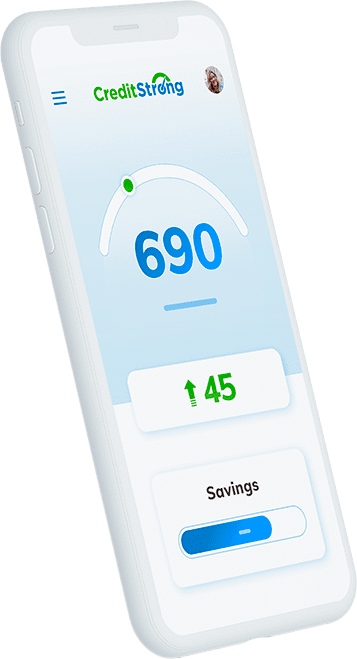Types of Credit in Use

Build strong credit
while you save
Credit Mix is the types of credit used. Examples may be revolving credit cards or revolving lines of credit, or installment credit like a fixed loan amount. Approximately 10% of a FICO® Score is based on this information.
What Are the Different Types of Credit?
There are three types of credit that make up your credit mix. Let’s take a closer look at each one.
Revolving Accounts
Revolving credit is very common and comes with a ‘credit limit,’ or the maximum amount of credit you’re allowed to use. It is called ‘revolving’ because you can use it repeatedly by making a charge and then paying off your balance. Minimum payments each month keep the account in good standing.
Outside of home equity lines of credit (HELOCs), the most common types of revolving credit are credit cards. Whether it’s a rewards credit card, student credit card, travel credit card, or business credit card all are considered revolving accounts.
Be careful— any credit card balance carried over each month is subject to an interest rate determined by your card agreement. Rates for balances may be fixed, or they may fluctuate based on the market.
Installment Accounts
Mortgages, auto loans, personal loans, business term loans, and student loans are a few of the many types of installment credit available.
Installment loans provide a lump sum of money that is repaid with a fixed interest rate. Monthly payments are made in a predetermined amount for the entire loan term. You can usually pay installment loans faster than the agreed-upon term (though be sure to check if there are any pre-payment penalties for doing so!) but cannot extend the term or reduce your payment.
Open Credit
These accounts have to be paid in full each month. There’s no repaying over time like revolving credit.
You’re probably familiar with open credit through your utilities where you pay the entire balance of the account based on how much water, electricity, or gas was used. It can also be in the form of debt collections accounts where the full balance is due by a set date.
FICO® Scores consider the mix of credit cards, retail accounts, installment loans, finance company accounts and mortgage loans. It is not necessary to have one of each, and it is not a good idea to open a credit account you don’t intend to use. In this category a FICO® Score takes into account:
- What kinds of credit accounts are on the credit report? Whether there is experience with both revolving (credit cards) and installment (fixed loan amount and payment) accounts, or has the credit experience been limited to only one type?
- How many accounts of each type exist? A FICO® Score also looks at the total number of accounts established. For different credit profiles, how many is too many will vary depending on the overall credit picture.
Why is my FICO or Vantage credit score different from each of the three major credit bureaus?
Each of the three major credit bureaus obtains data independently. A financial institution or non-bank lender that reports credit may only report credit to one or two of the bureaus, so the information each bureau uses to calculate your credit score may vary.
Credit Strong reports your loan to all three major bureaus.
Federal law allows you to request your credit report free of charge from each of the three major bureaus annually. Note that you may receive only your credit report from each bureau and not a credit score. You can request your annual credit reports at www.annualcreditreport.com*.
Why Having a Variety of Credit Types is Important
Once you get your credit report you’ll need to know what components are affecting your score. To understand how FICO scores work, you should know FICO credit scores consist of five factors:
- Payment History: 35%
- Age of Credit History: 15%
- Credit Utilization— the amount you owe: 30%
- Credit Mix: 10%
- New Credit: 10%
Other credit reporting agencies use the same factors at varying percentages to assess borrower credit. But if your credit mix is only 10% of your FICO credit score, then why is it important?
Having a variety of credit types proves to lenders that you’re a responsible borrower capable of managing multiple types of account payments, due dates, and payment systems. While it’s only a small part of your overall score, every little bit helps.
Even if you have a great credit mix, your score can be thrown off by a bad payment history or a high credit utilization ratio.
It’s a good idea to pay down any credit card debt or do a balance transfer to get a lower interest rate. You can improve your credit history and credit mix by getting a credit builder installment loan.
A credit builder loan is a secured loan that can show lenders a consistent payment history and introduce installment credit to your credit mix. It works similarly to a secured credit card.
When you make the final payment on a credit builder loan, the bank or credit union releases the cash you used to secure the loan. There are no annual fees for these loans and it’s a great way to build and diversify your consumer credit.
*Please be advised that by clicking the link above you will leave Credit Strong’s website. The link is provided only as a courtesy. Credit Strong does not endorse or control the content of third party websites.
CreditStrong helps improve your credit and can positively impact the factors that determine 90% of your FICO score.
